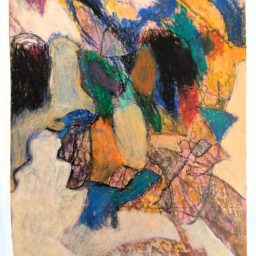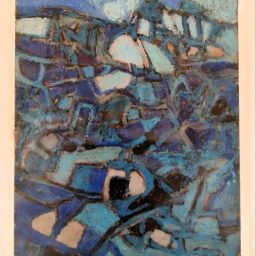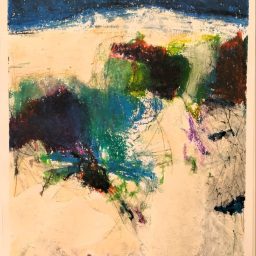Born in Rome in 1959, Maurizio Rossetti began his artistic training at the Academy of Fine Arts in Rome, graduating with top honors in 1984. Immediately after, he launched his artistic career with a significant private commission of 30 works depicting monuments of the capital, some of which were later reproduced in serigraphy. From the mid-1980s, he participated in numerous group and solo exhibitions, establishing himself on the Roman art scene and collaborating with prominent figures such as Giulio Turcato, Antonio Corpora, and others. At the same time, he pursued a career as an Art Director in the advertising field (1988–1996), an experience that enriched his visual language with a particular focus on communication and graphic composition. In the 1990s, he deepened his practice of watercolor and experimented with printmaking techniques, particularly etching, directing his research toward a lyrical and intimate expression of landscape and form. He exhibited in numerous Roman galleries, alternative cultural spaces, and group shows, favoring small formats and refined execution in his work. From 2000 onward, he intensified his exhibition activity, taking part in group exhibitions both in Italy and abroad. Notable among these were his shows in Croatia (Zagreb and Lipik), organized in collaboration with the Italian Cultural Institute and dedicated to memory and post-war reconstruction projects. Among his editorial collaborations is the poetry volume Sfegazzi by Sabatino Ciuffini, featuring illustrations alongside artists such as Ennio Baruchello and Renzo Vespignani. Throughout the 2000s and 2010s, he regularly participated in solo and group exhibitions, including small-format shows, municipal contemporary art events, and independent cultural initiatives. His work is distinguished by a balance between figuration and abstraction, a sober and poetic visual language, and a stylistic coherence developed over time. In 2022, he held the solo exhibition FOCUS#22 as part of the “Metti a Fuoco” series, curated by Scilla*Maris at Atelier Montez in Rome. His work has been written about by critics and authors including Felice Ferdinando Silanos, Elio Mercuri, Toni Bonavita, and Bruno Aller.
Events at Rome Art Week
Free access
Vernissage Friday 24 Oct 2025 | 18:30-21:30





